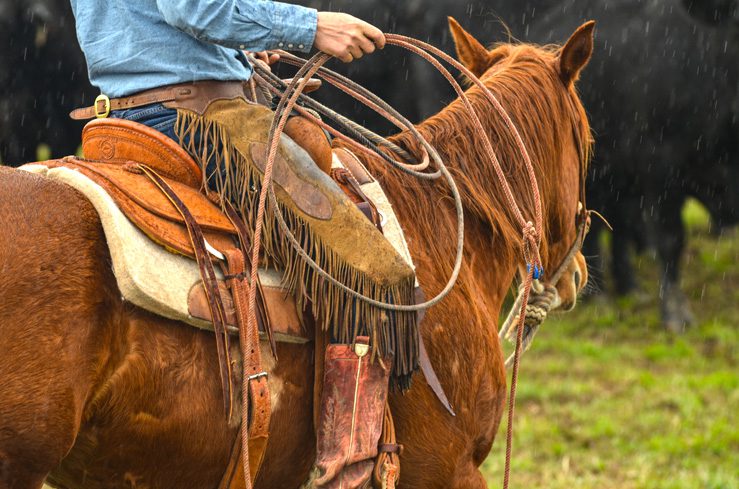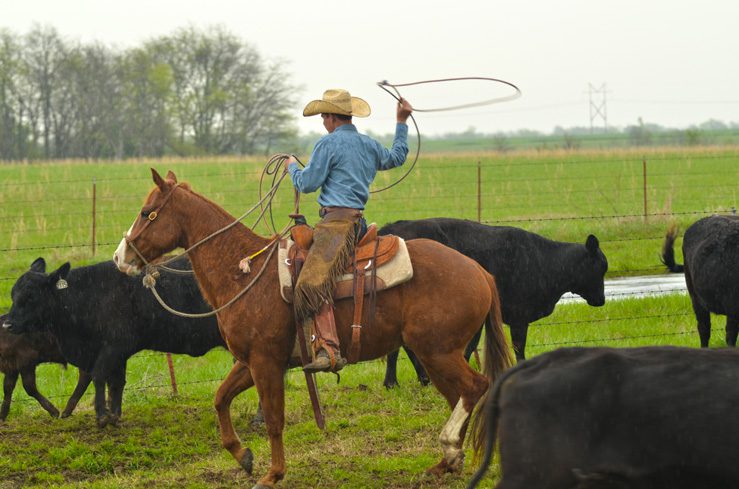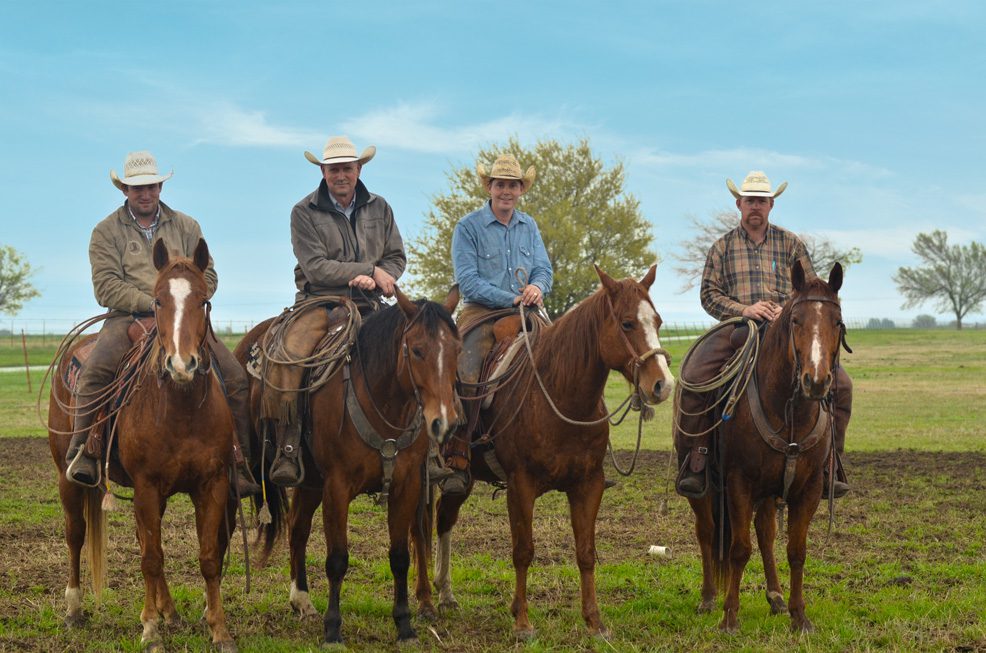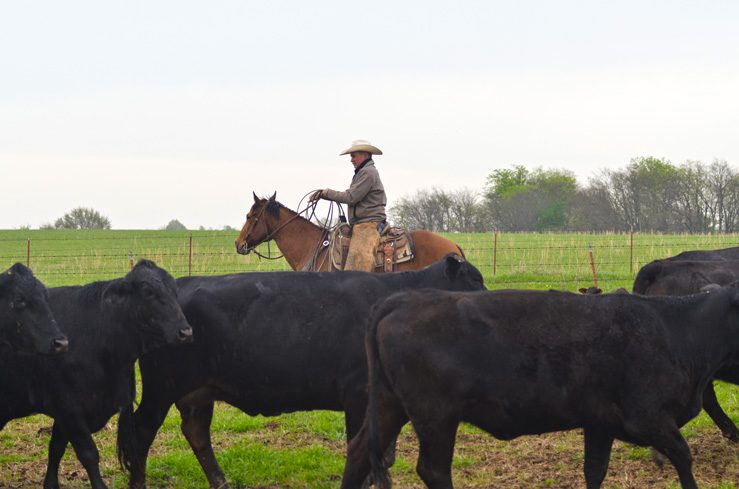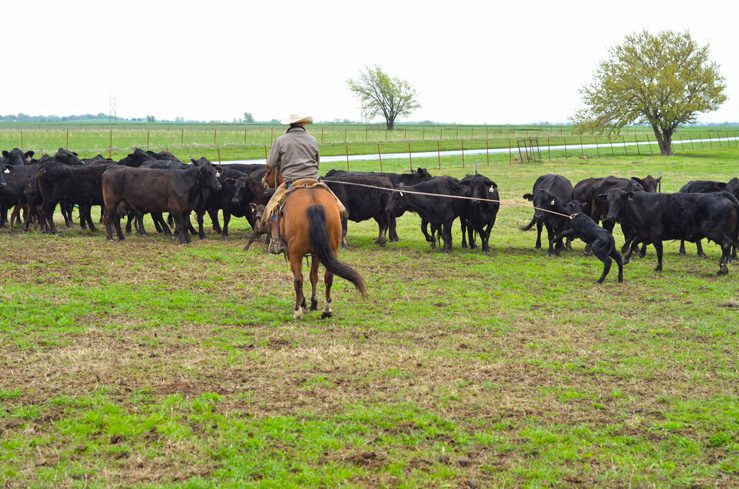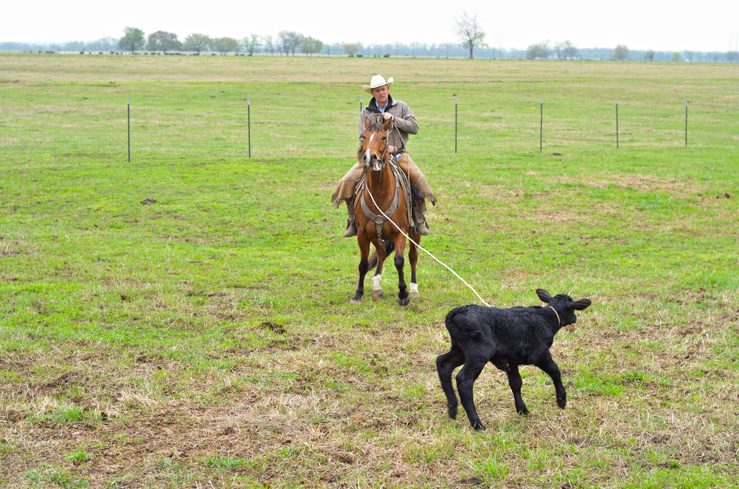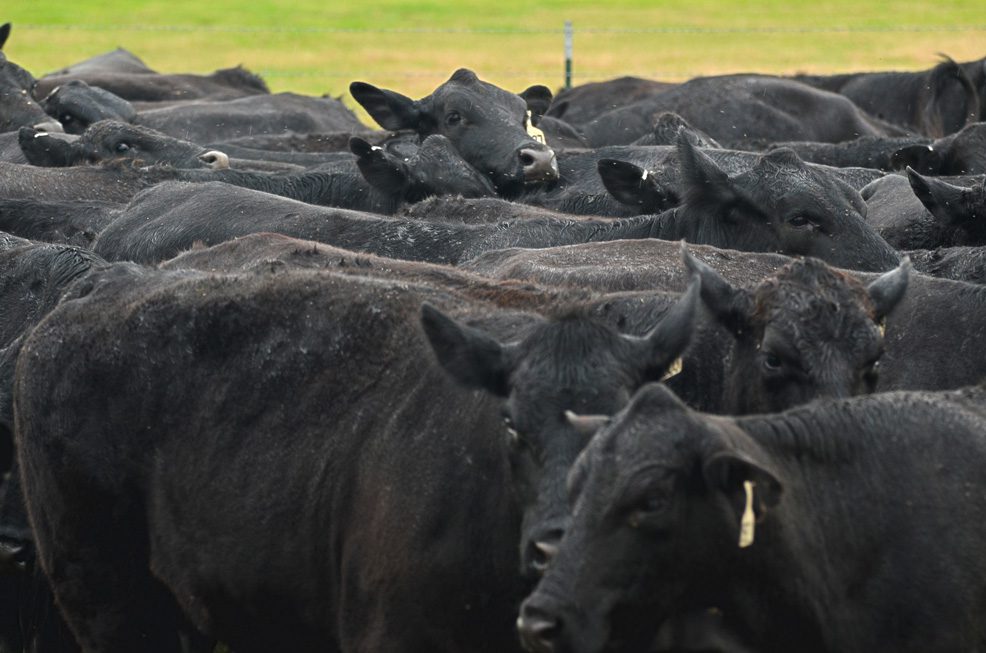
It’s no coincidence that Oklahoma is home to some of the most iconic personalities and institutions in American cowboy culture. From the National Cowboy and Western Heritage Museum to the nation’s most famous cowboy, Will Rogers, Oklahoma has a long and storied history of bravos and broncos.
And if you think the dust settled long ago on cowboys in the Sooner state, think again. Oklahoma hosts scores of major ranching operations, providing support for everything from agritourism to a large chunk of the national beef industry. Many of these ranches’ histories – and their cowboys’ – date as far back as the chaotic years following the Civil War.
The Heart of Cowboy Culture
The Stuart Ranch in south-central Oklahoma is one such operation. The oldest ranch in the state under continuous family ownership, Stuart Ranch sprawls from the tallgrass prairies of Bryan and Atoka counties for more than 100 miles to Jefferson and Stephens counties. Headquartered in Waurika, the business was founded in 1868 by pioneer Robert Clay Feeney, a judge in Indian Territory.
The ranch hosts a large cattle herd, mostly Black Baldies and straight Herefords. The herd divides its time between the original location of the ranch near Caddo in the fall and Jefferson and Stephens counties in the spring. In addition to serving as the base of the business, the Waurika branch of the ranch is home to the family’s show horse and broodmare operations. The cowboys use the horses not only to work cattle on the ranch, but to also participate in competitive events. The ranch functions as a farm as well, supporting more than 3,000 acres of farm for wheat pastures.
“Diversity helps us through the economic ups and downs of the livestock business,” adds Terry Stuart Forst, “so hunting and outfitting are also part of our ranch operations.”
Forst is the current matriarch of the Stuart Ranch. She grew up with an affinity for the ranch life, majoring in animal science at Oklahoma State University. But in 1992, she suddenly found herself widowed with two young sons and being tapped to take over operations from her father. She went back to school, this time to learn the business side of the family’s ranching empire. Today, she is one of the most respected ranchers in the business, and was inducted into the National Cowgirl Hall of Fame in 2007.[pullquote]Agriculture is a huge part of Oklahoma, both in her history and today.”[/pullquote]
But even under Forst’s dynamic leadership, running an operation the size of Stuart Ranch takes a dedicated team.
“My sons, Robert and Clay, are the sixth generation to work on our operation,” she says.
And then, of course, there are those vaqueros of lore: the cowboys of Stuart Ranch.
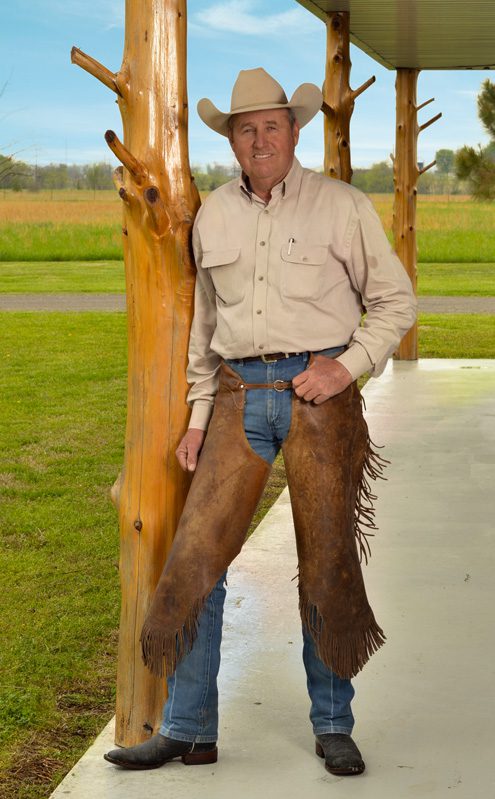
Cowboys over the generations have left their marks on the business, although these days, a cowboy there goes by the moniker of “camp man.” The ranch is home to four camps, and the camp men, each of whom is responsible for all activities at his location, oversee care of the cows, the land and the fences. Gone are the days of the chuck wagon; the ranch provides each camp man with a house, a pick-up truck with a trailer, horses and working facilities for the cattle. According to Forst, the family’s methods of working cattle have changed little throughout the generations, and the famous work ethic of the traditional cowboy is still a must.
“Many of the older ways of working cattle still are the best,” Forst says. “What has changed is the number of good hands. The best hands probably grew up working cattle, know how to work with a crew, know where to be and how to stay out of the way. Growing up in this culture, one learns about hard work, doing a job right the first time, not quitting ‘til the job is done, manners, respect for people and animals, and strong family values … Cowboys today on this ranch will still care for their cattle, feed during the winter, calve heifers and fix fence and water gaps. At this ranch, the willingness and ability to do whatever needs to be done is a necessity.”
Forst is as passionate about the impact of cowboy culture on her home state as one might expect from someone so steeped in its history.
“Agriculture is a huge part of Oklahoma, both in her history and today,” she says.
“ … I think cowboys did and do shape our culture by their values and ethics. We have been taught that our word is our bond. We are taught to help others in need. Family and friends are important, and you ride for the brand, so loyalty and dedication are not questioned. The cowboy culture never gives up. We have the joy of being in God’s creation every day and are so appreciative of the beautiful days … This is often a life, not a job.”
It’s Always Been About the Land and the Livestock
Across the state at the A Bar Ranch in Claremore, Mike and Martha Armitage also have felt the pull of the land in Oklahoma. The couple knows well what it means to be dedicated to the brand; prior to taking over the ranch in 1959, each of them grew up on their own families’ ranches. Today, the Armitage family lives in a 1904 homestead on the original ranch, initially owned by the Rucker family.
“This operation was started from a partnership with a great-aunt in 1959,” Mike Armitage says. “Its growth was fueled only by a desire and love of livestock and the lifestyle and freedom of working on the land. Both Martha’s and my siblings are in agriculture and cattle production. Our oldest son, Merrit, manages our Mayes County ranches, and our other son, Turner, is a senior at Oklahoma State University studying animal science.”
In time gone by, the A Bar was known as the Rucker Ranch, after the original land allotment to Frank and Dora Rucker in the 1880s. The Ruckers were among the first ranchers to settle in northeast Oklahoma, along with Clement Rogers, father of Oklahoma’s favorite native son, Will Rogers. In 1883, Armitage says, four ranchers (including Rucker and Rogers) settled near modern-day Claremore. In that time, the district was home to some 20,000 head of cattle, and during the early part of the 20th century, the Cowboy Poet himself did time as a ranch hand at what would eventually become the A Bar. Rogers often included the Rucker Ranch in his Wild West shows, and the bond between the families was strong. Together, the cowboys of northeast Oklahoma rode for the brand of their respective ranches and worked the individual grazing districts zoned around their base from the chuck wagon.
Over the years, the Rucker Ranch evolved into a 22,500-acre empire stretching east of Claremore. Today, on that same land, the cowboys of A Bar Ranch work a cowherd of 1,500 head, mostly Angus, as well as other cattle the Armitage family breed and graze. In addition to cattle operations, A Bar is home to 100 American Quarter Horse Association broodmares.
Armitage says that the day-to-day duties of the modern cowboy often change with the season. In the winter, cattle require nutritional protein boosts to combat the cold climate. In the spring, cowboys have their hands full with calving season and with protecting newborn calves from Oklahoma’s severe storms. During the summer and fall months, the cattle are bred, branded and vaccinated. There is never a slow moment in the life of a cowboy.[pullquote]… Cowboy-ing today involves all the same skill sets of sorting, roping and riding from the 1880s, with a controlled environment of artificial breeding, tighter calving periods and shorter grazing seasons.”[/pullquote]
While some methods have evolved over the years, the iconic image of the cowboy on horseback is an essential component of modern ranching operations. Armitage agrees with Forst that traditional cattle-working methods have endured the test of time since the era of Oklahoma’s original cowboys.
“The basic principle remains the same of cow care,” he says. “ … Larger operations continue to utilize cowboys on horseback for cattle handling. The handling of cattle on horseback is an inherited art form from our predecessors of the plains.”
In many ways, however, the operations of the modern cowboy have been transformed in recent years. While Forst credits the advent of technology as a primary game-changer for such cowboy duties as animal care especially, Armitage notes other developments in operations as well.
“Like all of agriculture, [ranching] has become increasingly productive,” he says. “ … Cowboy-ing today involves all the same skill sets of sorting, roping and riding from the 1880s, with a controlled environment of artificial breeding, tighter calving periods and shorter grazing seasons.”
Call them cowboys or camp men, the cowboys of Oklahoma continue to be the backbone on which the state’s history and culture is built.
“Oklahoma’s favorite son, Will Rogers, gave cowboys and cattlemen an opportunity and image that lives on,” Armitage says. “The independence of ranching and the cowboy lifestyle portrayed throughout generations continue to thrive today.”
“Yes, this job pays the bills, which we need it to do,” says Forst. “But a love and passion for the land, the livestock, raising our children with strong morals and work ethics, and getting to watch the sun come up between a horse’s ears are the reasons we choose this life.”






















